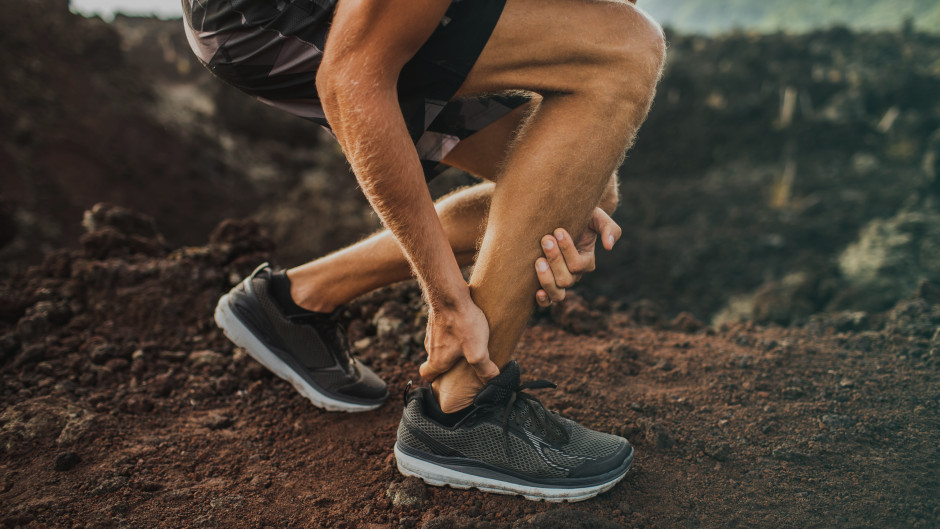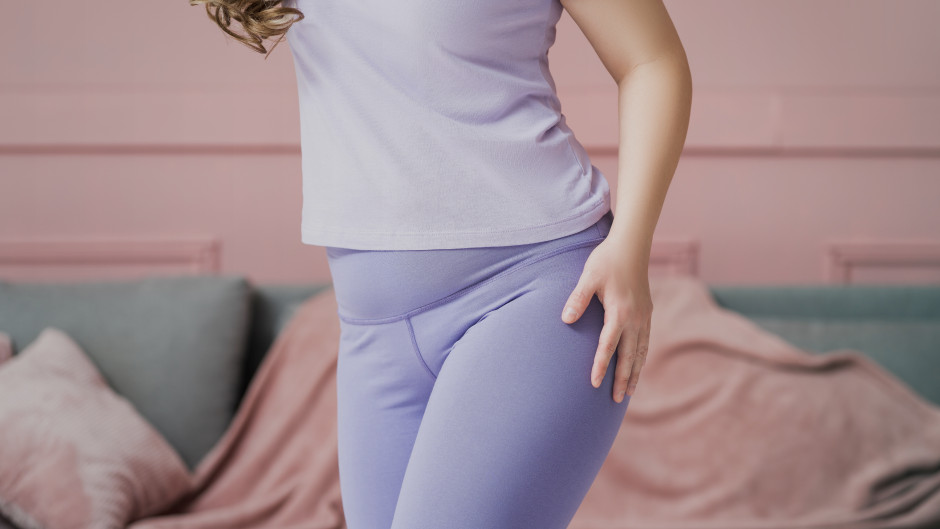Greater trochanteric pain syndrome (GTPS)
I have seen and trained many physiotherapists who overcomplicate greater trochanteric pain syndrome (GTPS). The first mistake is missing the most accurate tests to diagnose GTPS correctly. Then treatment is often complicated and involving exercises that are contradictory to best practice tendinopathy management.
Thankfully, there is a simple approach to diagnoses and treatment that will lead to superior results. This does not mean we throw away clinical reasoning, but we use clinical reasoning to come to a sound diagnosis and treatment plan.
This article will address key points in a patient interview and diagnostic tests that are sensitive and specific to rule out and in GTPS respectively. We will then tackle treatment options for our patients.
Diagnoses of GTPS – Patient Interview
Any diagnosis will start with a thorough patient history. This is because the presentation of pain and behavior/location of symptoms from patient history can lead towards the diagnoses before a physical examination is even performed.
Patients suffering from GTPS will usually have a similar story. Their pain will usually come on insidiously, or because of increased loading like going on a hiking adventure or moving to a new house.
Patients should have local lateral hip pain over the greater trochanter that occasionally will refer down the lateral thigh. This condition is more prevalent in women REF. The pain will often be worse at night and associated with standing and walking. The picture of these patients will be very similar.
One thing to be aware of is other common differential diagnoses such as low back referred pain, and hip pain. Often patients may have a combination of GTPS in association with hip OA or non-specific low back pain.
An activity that can help to separate hip OA from GTPS is the patient’s ability to don/doff shoes and socks. If they struggle with this activity, they are more likely to suffer from OA than GTPS REF
Diagnoses of GTPS – Physical Examination
We now have some great studies and reasonably reliable tests for ruling in and out GTPS. This is good news again because the process does not need to be complex.
Like any standard physiotherapy assessment, we would need to assess joints above and below, but for the sake of this article I will address the tests specific for GTPS.
I always begin with a single leg stance test. You ask the patient to stand on one leg, with the other leg bent to 90 degrees. Make sure that there is no trunk shift and ask the patient to hold for 30 seconds. If there is no pain in this time the test is considered negative.
This is simple and has an extremely high specificity for GTPS. This means, that if the test is positive, the chance is extremely high that the diagnosis could be GTPS. But if the test is negative, there is still a chance GTPS could be present. Lequense (2008) (https://pubmed.ncbi.nlm.nih.gov/18240186/ )study showed the SLS had a specificity of 100%, meaning every person who was positive on the single leg stance, had gluteal tendinopathy on imaging.
Palpation
The next test I would consider is palpation. Position your patient in side-lying, painful side up and palpate thoroughly over the greater trochanter. A positive test is pain over this area.
Palpation on Grimaldi’s 2017 study (https://bjsm.bmj.com/content/51/6/519 ) had a sensitivity of 80%. This makes palpation the single best test at ruling out the presence of GTPS.
De-rotation test
The last test is called a de-rotation test. This is where the patient is positioned in supine with the tested leg flexed at the hip to 90 degrees. From here, maximal external rotation is applied. The patient is then asked to internally rotate into your resistance. If pain is present at the hip the test is considered positive.
This test according to Grimaldi 2017 has a specificity of 94% and a sensitivity of 44%. So again, if positive this test is great at ruling GTPS in, but if it is negative it cannot be completely ruled out.
There are many more proposed tests, but the combination of these three are powerful in the diagnoses of GTPS. Especially when they are all positive – it is unlikely that another condition will be the source of symptoms.
Once a diagnosis of GTPS is established the focus then shifts to the treatment of this condition.
Treatment for GTPS
Most evidence is now moving away from passive hands-on techniques like ITB release and more towards load management through advice and exercise.
This is the beauty of treating GTPS – the treatment is simple, yet precise. The patient will not improve unless their load is adequately managed, and to do that well the patient needs the correct information.
Case-study
One of my patients was a middle-aged man with debilitating lateral hip pain, stopping him from performing his work well. He had already trialled HCLA injections with minimal results. He was diagnosed with GTPS through the clinical examination outlined above, and he had ultrasound imaging.
Treatment consisted of advice on positions to avoid, and one exercise with instructions to self-progress over the next three weeks. He was seen twice more over the next two months and reported 100% improvement in symptoms.
Advice and Education
Advice needs to be simple and is based on a few principles we know through research. There is a simple youtube video with all of these explained here HERE. Advice should leave your patient feeling confident that they know exactly what stirs up the pain, and positions/activities they need to avoid to feel pain free. Here are the main principles your patient will need to follow:
Avoid having your legs over the mid-line of your body – this includes activities like sitting with legs crossed
This is all about avoiding compression of tendons via the iliotibial band. As you move your hips across the mid-line of your body, the ITB will tighten passively which causes increased compression at the greater trochanter.
Keep away from sitting in deep hip flexion
Again, as the hip moves into deeper degrees of flexion the fascial connections will tighten causing some compression over the greater trochanter. It is good to advise patients not to sit in very low chairs like sofas and to make sure their driving position is not in deep flexion.
Avoid compression of the lateral hip
Patients often need to be told not to lie on the sore side in bed. If they are long-term side-sleepers and are unable to get off it, they could trial an eggshell overlay to help reduce the compression on prominent structures like the greater trochanter. Another handy tip is for them to have a pillow between their legs, so the legs do not fall into adduction if they do lie on their unaffected side.
Load-management and progression
I will always share with patients what load management means. Even if your patient performs the correct exercises, the tendon will not heal if they refrain from modifying their activities. Patients need to be aware that part of recovery is a change in everyday activities. They may need to stand less on the job, they might have to avoid ladder climbing for a few weeks. Can they avoid walking uphill etc? These are examples, but it is important to be specific to the patient in front of you.
Also teach your patient about latent pain – pain after an activity. This pain usually means they have done too much. So, this is a signal that they need to modify whatever activity they were previously doing.
Exercise
When prescribing exercise remember the principle is all around load-management. The same principles explained above apply to exercise. I teach my patient that if they experience pain sometime after performing an exercise, they may need to lower the number of repetitions.
Consider exercise prescription like medication prescription. A doctor would never give you a script and not tell you how much of that medication to use. This is like exercise – we should never give an exercise, without telling the patient exact sets and reps, and how to progress or regress depending on their symptoms.
What specific exercise would I use?
Exercises should empower your patients and take the reliance off you and onto them.
If the tendon is in the acute reactive phase (according to Cook and Purdams model (https://bjsm.bmj.com/content/43/6/409)), I love to start with a simple side-lying isometric contraction.
The patient is positioned on their good side in crook lying with a thick pillow between their legs. The therapists thumb palpates TFL, while the first finger is on the body of gluteus medius. The instructions to the patient are to attempt to lift the weight of the leg off the pillow, without lifting the leg into the air.
Aim for a very low contraction of about 20%. You should feel nice contraction through gluteus medius with a little activation of TFL – but this should not be the only muscle working.
Here is a video of the exercise for exact patient set-up and palpation. Note this is teaching a patient to self-palpate so the palpation is reversed. HERE
I often start the patient on 5 second holds, 5 reps and three sets, three times a day. I then ask the patient to self-progress to 10 reps, and then 15 reps.
The simplicity of this strategy is the patient has one exercise, that is it. I do not focus on anything else to begin with.
Progression of exercises
As the patient improves, you will invariably add exercises based on their need. I would continue to progress the loading on gluteus medius tendon by going into weight-bearing positions, and then towards single leg activities.
I do not give many exercises as this decreases patient compliance and they tend to get the exercises wrong anyway. Focus on one or two, and progress those over time. Teach the patient to be in control and watch them recover!
Conclusion
Treating GTPS does not have to be difficult. Follow the simple evidence-based diagnostic tests to get a diagnosis, and then treat simply. Never underestimate the power of patient education and be confident that the one or two exercises you give will work. Stay away from stretching and teach correct load management and see your patients improve.
Check out the website of Caleb Gray HERE
Get 20% off for the yearly membership with the discount code: EASTER2022
Cook JL, Purdam CR. Is tendon pathology a continuum? A pathology model to explain the clinical presentation of load-induced tendinopathy. British Journal of Sports Medicine 2009;43:409-416.
Grimaldi, A., Mellor, R., Hodges, P. et al. Gluteal Tendinopathy: A Review of Mechanisms, Assessment and Management. Sports Med 45, 1107–1119 (2015). https://doi.org/10.1007/s40279-015-0336-5
Grimaldi A, Mellor R, Nicolson P, et al. Utility of clinical tests to diagnose MRI-confirmed gluteal tendinopathy in patients presenting with lateral hip pain. British Journal of Sports Medicine 2017;51:519-524.
Lequesne, M., Mathieu, P., Vuillemin‐Bodaghi, V., Bard, H. and Djian, P. (2008), Gluteal tendinopathy in refractory greater trochanter pain syndrome: Diagnostic value of two clinical tests. Arthritis & Rheumatism, 59: 241-246. https://doi.org/10.1002/art.23354
Segal NA, Felson DT, Torner JC, Zhu Y, Curtis JR, Niu J, Nevitt MC; Multicenter Osteoarthritis Study Group. Greater trochanteric pain syndrome: epidemiology and associated factors. Arch Phys Med Rehabil. 2007 Aug;88(8):988-92. doi: 10.1016/j.apmr.2007.04.014



